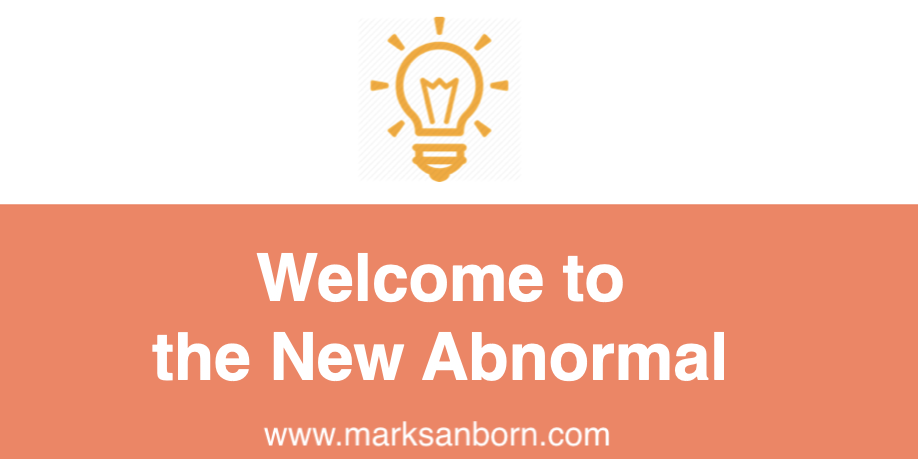Everyone wants to know when things will get back to normal.
Most think that it won’t be like it was before, and they are looking for “the new normal.”
It won’t be a successful search. Not only won’t there be an”new normal” but the very concept is a really bad idea.
Rewind:
I started hearing and reading about “The New Normal” years ago. Whether it was 9/11, the tech implosion or the global recision of 2008, speakers, authors and consultants glommed on to the phrase suggesting that they could define what that new normal would look like.
But no sooner had someone defined the new normal than it changed again.
That’s because today “normal” is a moving target.
During a recent interview about post Covid-19, entrepreneur Mark Cuban referred to the “new abnormal.”
Bingo.
I can’t think of a better way to describe post Covid-19. Nobody knows exactly it will look like. Many will guess. A few will get lucky and come close.
But what we do know is that whatever happens will be different, it won’t stay the same for long and it will challenge both our ingenuity and resilience.
Thinking in terms of a new normal is dangerous, and here’s why:
- How do you know anything will last or remain unchanged long enough to be considered normal?
- Once you think you’ve found it, you quit paying attention. That’s when big change blindsides you,
- It is tedious to keep redefining what the new normal is and the odds of consensus with others is small.
The alternative is to develop a different way of thinking and acting in light of the new abnormal.
Thinking: Be better informed about your business than you’ve ever been before. Like it or not, you need to increase your intellectual bandwidth.The challenge isn’t to get information as there is plenty of it. The challenge is to get the best information. You need to access and then assess the validity of what you are using.
And credibility will drive both trust and results. Nobody will get it exactly right, but the smartest and most diligent will come closer. And at every juncture, you, me and them need to be honest about certainty or lack thereof. Scenarios will be easy to suggest, but known outcomes much, much harder.
How do you behave in the new abnormal?
Agility replaces processes. Processes aren’t bad as long as they aren’t set in stone. You’ve got to stay vigilant about what is working and when it needs to be improved or abandoned. The goal of excellent product or service delivery doesn’t change. How you achieve them are like running water.
You might not think of resilience as a characteristic, but there are behaviors that both develop and exhibit it. Being open to feedback and suggestions from those at all levels in your organization and a willingness to implement good ideas regardless of their source creates resilience. A lack of resilience limits input and the result action for both the work it takes and the disappointment when a change doesn’t work. Resilient people may become discouraged but they don’t let the discouragement stop or slow them. They do what needs to be done, even if there aren’t emotionally up.
Resilience also keeps you from becoming too married to an idea you loved or championed when new information shows it isn’t working. Rather than pride of ownership, focus on pride of outcome.
And the best kind of resilience works to keep both actions and attitudes positive, not out of naïveté or denial, but because of confidence rightly earned from past successes in overcoming setbacks.
Mark Sanborn is an award winning speaker and Leadership Expert in Residence at High Point University, the Premier Life Skills University. For more information about his work, visit www.marksanborn.com. He also teaches professional speakers and leaders how to increase their messaging and public speaking effectiveness. Learn more here.








